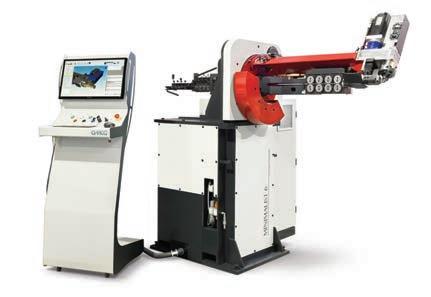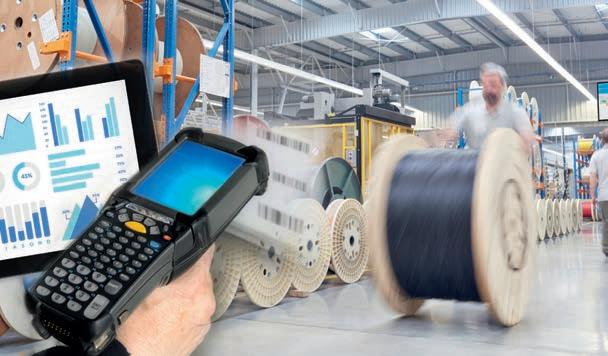T H E F U N D A M E N TA L S
NEW FOR 2021
Industry smarts evolved from WAI’s iconic “Fundamentals” course
Rod Defects: Part 2 of 3 This second of three Fundamentals columns is from the WAI’s Ferrous Steel Handbook. The section on rod defects, which has 39 images, explores 16 types of rod defects. Part 2 presents fire crack transfer marks, roughness, slivers (shell), core segregation and surface decarburization. Part 3 will include hard spots, mechanical damage, hot shortness and burned steel, nonmetallic inclusions, and slag entrapment. Part 1 presented: seams (cracks), laps, fins (overfill), rolled-in extraneous matter, scratches and roll marks. The handbook can be purchased online at www.wirenet.org.
Fire crack transfer marks Fire crack transfer marks are periodic, elevated patterns that run at right angles to the rolling direction. Root Cause. During hot rolling, roll surfaces are continuously heated and cooled. Stress cracks occur in the roll grooves if the rolls are made from unsuitable material and/or cooled inadequately. Proper cooling, coupled with timely changing or dressing of the rolls, will minimize stress cracks. Depressions in roll surfaces cause corresponding protuberances in a rolled product. Although fire crack transfer marks from earlier passes are smoothed out in subse-
quent passes, they can lead to other surface defects such as seams, laps, or slivers. Detection. Because of their characteristic form, fire crack transfer marks can easily be detected with the naked eye or with low magnification. See Fig. 16. Misinterpretation. Fire crack transfer marks can be mistaken for roll marks.
Roughness Continuously recurring, irregular depressions, and/or protuberances on the surface of wire rod are known as roughness. Root Cause. A rough wire rod surface is usually caused by severe roll groove wear, particularly in the last two rolling passes. A smooth surface after rolling can still become rough if heavy oxide scale forms on the wire rod due to excessively slow cooling. Corrosion can cause surface roughness if the rod is stored for long periods in a damp or corrosive environment. See Figs. 18 and 19. Detection. Surface roughness on descaled specimens can easily be detected with the naked eye or with low magnification. The degree of surface roughness can be determined by microscopic examination or measured quantitatively by using a three-dimensional laser surface profilometer. Misinterpretation. Roughness cannot be confused with other defects.
Editor’s note: This section, which will present knowledge from some of the industry’s best, is not limited to Fundamentals instructors. For editorial submission considerations, email editor@wirenet.org.
SECTION SPONSOR
In-depth industry know-how and highly productive IT solutions for the Smart Cable Factory
Düsseldorf, Germany May 09 - 13, 2022 VISIT US AT BOOTH 9B54
22
W I R E J O U R N A L I N T E R N AT I O N A L O C T O B E R 2 0 2 1
Increase flexibility to customer requests Ensure on-time delivery Optimize OEE Reduce scrap and WIP inventory Minimize non-value-added work
Cutting-edge ERP & MES solution for cable manufacturers
www.advaris.com
W W W. W I R E N E T. O R G














